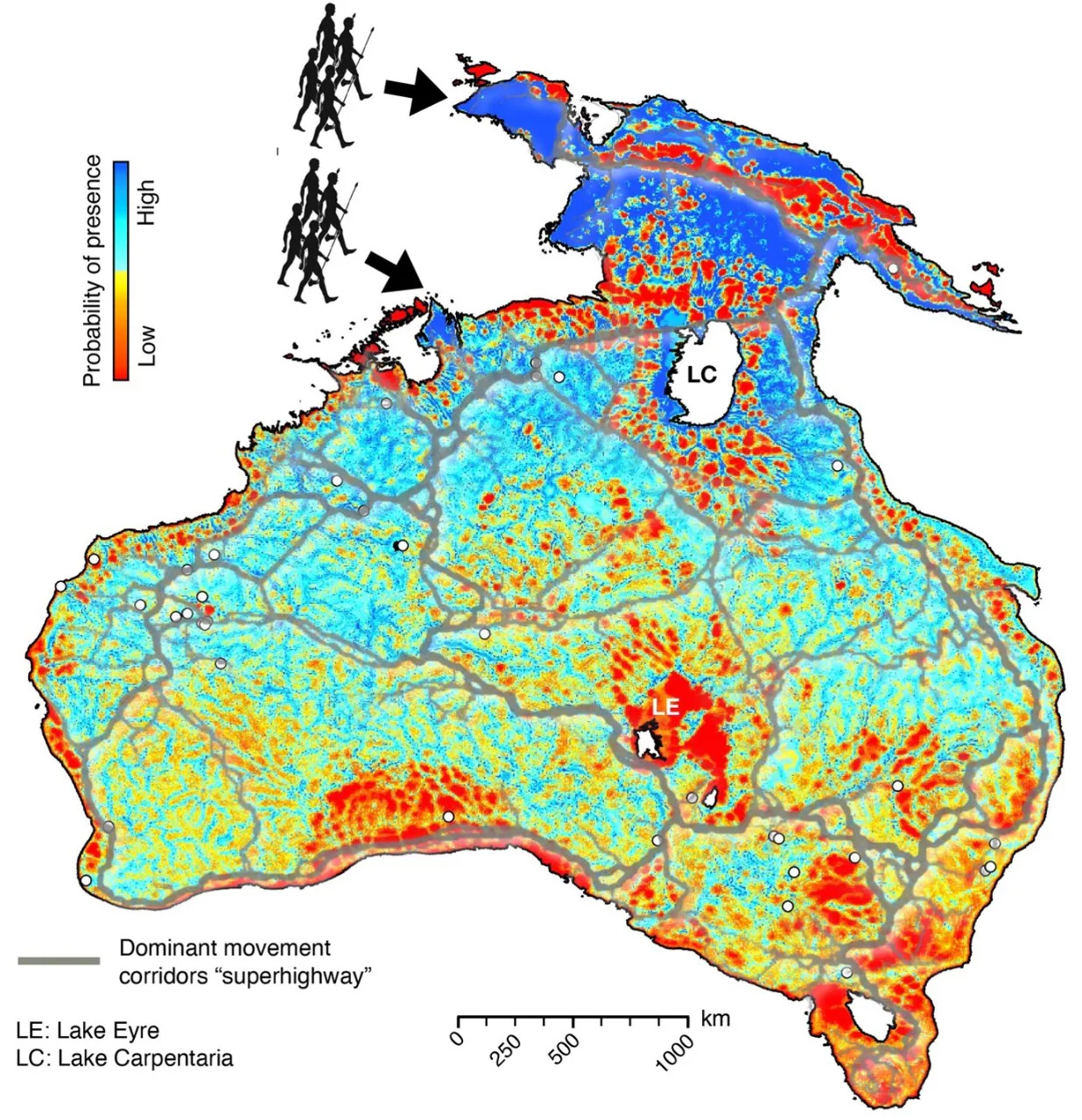Navigating Sahul: Tracing First Peoples' Early Migration Patterns
Manage episode 418067068 series 3444207
In the annals of the human story, few narratives are as compelling as the journey of Australia and New Guinea's First Peoples across the vast expanse of Sahul. Now, a groundbreaking study1 led by the University of Sydney sheds new light on the migration patterns of these early pioneers, offering fresh insights into their remarkable odyssey spanning over 40,000 years.
Decoding the Terrain: A Novel Approach to Migration Studies
Led by Associate Professor Tristan Salles from the School of Geosciences at the University of Sydney, the research leverages dynamic modeling to unravel the complex interplay between human migration and evolving landscapes. Departing from conventional archaeological approaches, the study integrates insights from landscape evolution models, providing a nuanced understanding of the terrains traversed by Sahul's earliest inhabitants.
Traversing Sahul: A Journey Through Time
Since humanity's arrival on Sahul approximately 75,000 years ago, the continent has undergone profound climatic transformations. Drawing on an established landscape evolution model spanning from 75,000 to 35,000 years ago, the research offers a compelling narrative of human migration across this dynamic landscape. By simulating thousands of scenarios, the study unveils the likely pathways taken by early settlers, shedding light on their remarkable resilience and adaptability.
Unveiling Migration Patterns: Insights from Simulation
The findings of the study paint a vivid picture of human migration, with distinct entry points into Sahul shaping the trajectories of early settlers. From the northern reaches of Western Papua to the southern shores of the Timor Sea shelf, diverse migration routes emerged, converging at iconic archaeological sites such as Ngarrabullgan Cave, the Puritjarra rock shelter, and Riwi Cave. These simulations reveal migration speeds ranging from 360 meters to 1.15 kilometers per year, highlighting the dynamic nature of human movement across Sahul's diverse landscapes.
Mapping the Journey: A Radiating Wave of Migration
Rather than following well-defined migration routes, the study suggests a radiating wave of human movement, guided by river corridors and coastlines. From the verdant forests of the Great Dividing Range to the arid expanses of Australia's interior, early settlers navigated a mosaic of habitats, forging connections along ancient super-highways and traversing remote hinterlands.
Towards New Discoveries: Implications for Archaeological Exploration
By integrating mechanistic simulations with landscape data, the study offers a powerful tool for identifying new areas of archaeological significance. By evaluating the likelihood of human visitation, researchers can pinpoint regions ripe for exploration, streamlining the process of archaeological survey and discovery.
A Testament to Resilience: Redefining the Narrative
In unraveling the dynamic interplay between human migration and evolving landscapes, the study redefines our understanding of Sahul's ancient past. Beyond mere exploration, it offers a testament to human resilience and adaptability, showcasing the indomitable spirit of Australia and New Guinea's First Peoples in the face of environmental upheaval.
As we delve deeper into the annals of history, let us heed the lessons of the past and celebrate the enduring legacy of those who traversed the ancient landscapes of Sahul, shaping the course of human history in the process.
Salles, T., Joannes-Boyau, R., Moffat, I., Husson, L., & Lorcery, M. (2024). Physiography, foraging mobility, and the first peopling of Sahul. Nature Communications, 15(1). https://doi.org/10.1038/s41467-024-47662-1
8 episodes





